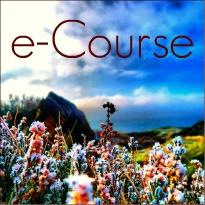The New Dirty Dozen
 Sunday, July 8, 2012 at 7:02 PM
Sunday, July 8, 2012 at 7:02 PM (Note: bell peppers = peppers; corn = sweetcorn; eggplant = aubergine; sweet peas = peas)
The Environmental Working Group (EWG) has just updated its Dirty Dozen and Clean Fifteen lists for 2012.
If you haven’t come across these before, they’re simple lists of the fruit and veg containing the highest levels of pesticides (the Dirty Dozen) and those with very few contaminants (the Clean Fifteen). By choosing organic when buying the produce on the Dirty Dozen list, you can substantially reduce your overall intake of pesticides.
If you click over to the EWG website, you can print off a copy of the lists to carry with you when shopping; or, even more convenient, there are smartphone apps available (they’re free) so that all the information is just a click away.
Also…
Once you have all your lovely organic and uncontaminated produce, you may like to know that this coming Wednesday (11th July) is International Raw Food Day (IRFD). To take part, all you have to do is eat lots of scrummy, fresh, living food for 24 hours!
I’ve long been an advocate of raw food and its amazing ability to transform both our health and our state of mind. If you’d like to incorporate more living foods into your diet but are unsure where to begin, the IRFD website has a free handbook you can download; as well as special offers on some really useful books.
Karen Knowler - the expert behind the day - really knows her stuff and has a particular talent for making things simple and accessible. If you want to give raw a whirl, this could be a great place to start.
Soup and Sunshine
 Friday, July 6, 2012 at 10:04 PM
Friday, July 6, 2012 at 10:04 PM
I made a bowl of steaming hot soup for lunch today. As you do on a grisly winter’s day when it’s raining cats and dogs outside.
Only it’s not winter. It’s July.
The British summer has plumbed new depths this year, even by its own miserable standards. We’ve had dark grey skies and relentless rain for weeks now and there’s no forecast of a let-up. In fact, the prediction is this will go on for at least another MONTH! Which leaves us all rampantly jealous of anywhere in the world that has actual summer sunshine and a little bit of warmth.
It’s high time to compile a list of tips for urging a few sunbeams our way. Feel free to add to this list in the comments.
- Stop making steaming hot soup (this is a note to self). Chilled soups are allowed. And salad and bowls of strawberries and iced lemonade. Fake it till it’s real.
- Do a sun dance. It’s the opposite of a rain dance and far more useful in Britain. In fact, sun dancing should be a compulsory part of the school curriculum. Maybe we’d all be better at manifesting sunshine then.
- Make a summer word cloud (see above). Go to Wordle and type in a few summery words and phrases. Save the resulting cloud and use it as wallpaper on your desktop or print it out and hang it where you’ll see it frequently. Will the sunshine to appear.
- Practise gratitude for every weak glimmer of sunlight that falls across your path. Attract it, baby!
- Put a towel on the floor. Switch on every light in the room and don your sunglasses. Then lie on the towel (preferably clad in a bikini) and read a trashy novel. Pretend.
- Look at every photo you’ve ever taken in bright, summery sunshine (they were probably all taken abroad). Look at them for a loooong time. Until you’ve actually forgotten what the weather’s doing outside the window.
- Blast out your best summer play list and sing along very loudly. Defy the rain to fall.
- What the heck - just make the best of it. Have a picnic in the car. Go for a walk in the rain. Swim in the sea (well you were going to get wet anyway).
- Failing all that, make a bowl of steaming hot soup (I have a good recipe), light the fire and imagine it’s winter. A good imagination is not required. And see? Isn‘t it just a perfectly cosy winter‘s day?!
Changing Places: Beth Nicholls on Kyoto
 Wednesday, July 4, 2012 at 7:36 AM
Wednesday, July 4, 2012 at 7:36 AM
I distinctly remember the moment I stepped off the plane at Kansai Airport at the tender age of 19, horrified to discover that people actually spoke that language. Japanese - the language that I should have been studying during the previous year, when in fact I was too busy enjoying my first year of university, with all its parties, student radio, sport and all those other distractions. I had nearly failed my exams and had to beg my teachers to let me go to Japan – “I’ll be fine when I get there,” I said with breezy 19-year-old confidence.
But then I arrived in Kyoto, where everyone spoke in an elegant, poetic, local dialect, and I couldn’t understand a word. The city was like nothing I had ever seen – a rich combination of temples, bamboo forests, and concrete buildings. Kimono-clad shuffling women, monks in long robes and cool young people in crazy clothes. Bright neon adverts and inviting glowing lanterns. Brash shop fronts and tucked-away restaurant entrances. Fireworks in summer and festivals everywhere. I had opened a door to a whole new world and suddenly I couldn’t wait to learn all about it.
That year I fell in love with Kyoto. It was like I was living in some kind of reverie. Each morning, once school was finished for the day, I would drop a coin on my map and pedal off to where it landed. Every day I explored a new shrine, climbed another hill, tried to strike up a conversation with a different local. I made new friends, laughed my way through conversations when my language skills weren’t enough, and felt my heart opening to a life of adventure. The place had such an impact on me it was as if the language soaked into my skin.
After uni I went back and spent four more years living and working in Japan, and ended up doing a Masters’ degree in the language. It changed my life’s direction in so many ways. Now, nearly 15 years later, I am back here in Kyoto on a six month adventure with my fiancé. I spend my days out and about with my camera, browsing washi paper shops, learning new crafts and sitting in gorgeous cafes sipping green tea and contemplating what lies ahead. I feel like I am 19 again – inspired, surrounded by beauty, open to adventure, happy and free. I love this place.
Beth describes herself as ‘an adventurer, wanderer and seeker of knowledge and beauty’. She’s also founder of the hugely successful ‘Do What You Love’. Find her on Facebook and Twitter.
Changing Places is a guest post series about the power of place to change us. You can find other stories in the series here. If you’d like to share your story, please contact me for submission details.
(Photo of Beth by NavyBlur)
Bear Yoyos
 Tuesday, July 3, 2012 at 11:05 PM
Tuesday, July 3, 2012 at 11:05 PM
Right, let’s be clear. This is NOT a sponsored post. But if Bear ever launches an affiliate scheme, I’ll be the first to sign up!
They’re meant for kids. Each box with its dinky handle contains five packets. And each packet contains two fruit leather yoyos (think liquorice catherine wheels) and a glossy, playing card-sized card. The cards can be grouped into sets. And saved and swapped. And - this is what I love - every card has two rather astounding facts on the back. Better yet, the facts are written in a spiral, so you have to twist the card around to read. Fun!
You might gather that, with all the enthusiasm of your average seven year old, I’m smitten with these. For a start, I’m a sucker for fruit in any shape or form (the yoyos are delicious - the peach ones are my favourites). Add to that, they take me back in time. When my brother and I were small, we used to collect the cards tucked inside packets of PG Tips (tea) - remember those? And then I’m learning SO MUCH! Did you know, for instance, that fish can suffer from seasickness? Or that slugs have four noses? That all flies are deaf? Or that the average chocolate bar has eight insect legs in it? (You probably didn’t want to know that one.)
All I’m saying is, if you spot these things in your local supermarket, treat yourself. Open the little packets with all the glee with which you used to collect stuff when you were seven. And it you need any swaps, you know where to come!






